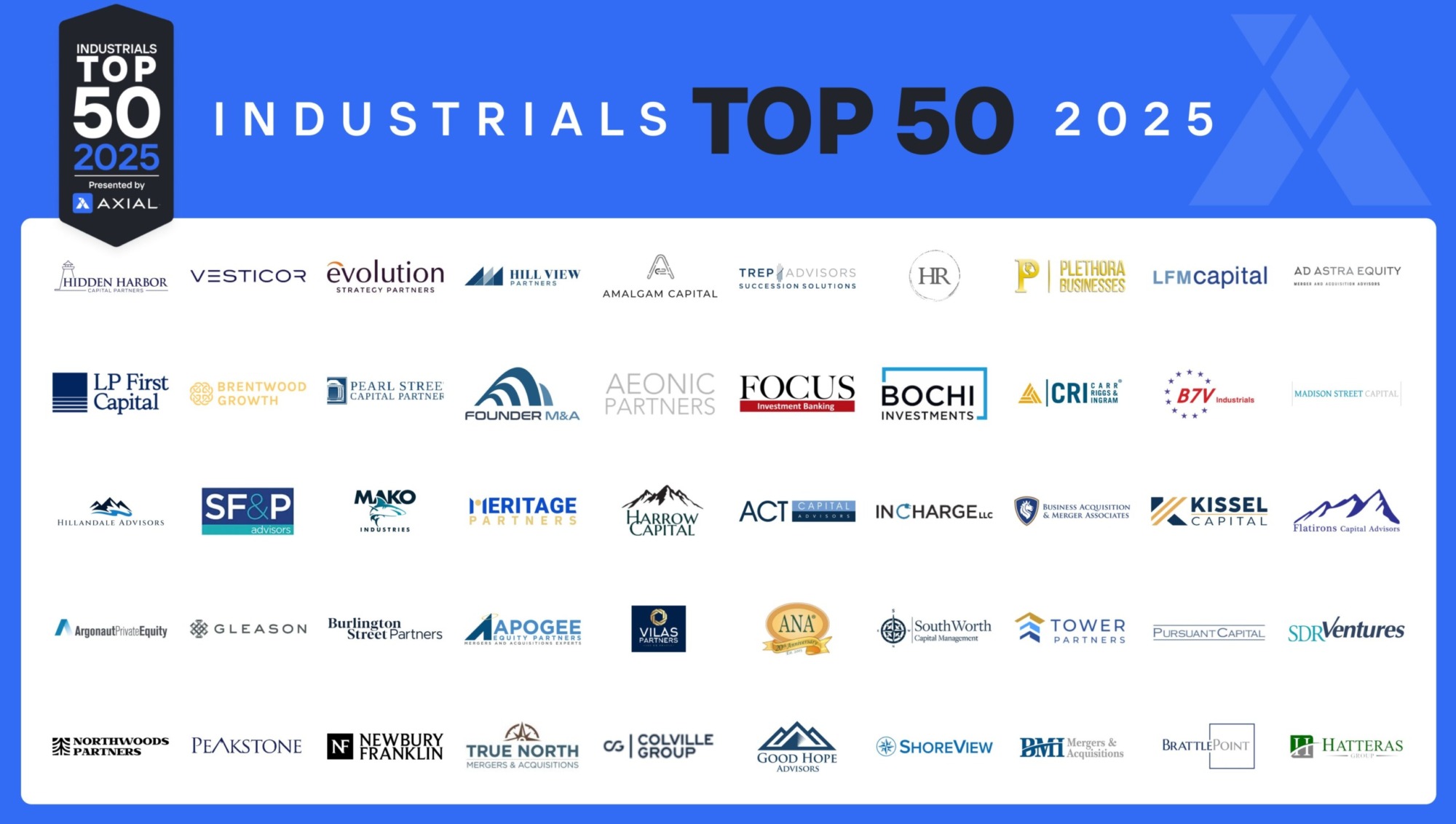
The Top 50 Lower Middle Market Industrials Investors & M&A Advisors [2025]
Industrials remains the most dominant sector in Axial deal flow, representing more than 25% of all deals brought to market…
Dental clinic consolidation is on the rise, with no expectations of a slowdown anytime soon. Dentistry is seeing high demand among buyers and investors in the lower middle market relative to other healthcare categories, according to mandates from over 1,500 buyers on Axial. We talked to Doug Rozsa, CEO of dental, veterinary, and optometry M&A advisory firm FiSol DVO, and Kevin Cumbus, Co-Founder and Partner at dental-focused M&A advisory group Tusk Partners, about what they’re seeing in the space.
This article is an excerpt from Axial’s 2019 Lower Middle Market Periodic Table of Healthcare — check out the full report for more on the top LMM investors and acquirers and healthcare investment bankers and advisors, as well as other in-demand healthcare categories.
—
What are the core factors driving investor and buyer appetite for dental consolidation? Doug Rozsa of FiSol DVO, suggests that it all comes down to really good potential for multiple expansion driving excellent returns.
Private equity firms “feel as though they can’t lose money even if they try, and for the time being, they’re not that far off,” Rozsa says. “Private equity funds are thinking that if they buy at a 4-8x or even a 10x multiple, they can grow it to a 14-16x multiple — and that’s good math. You get the right management team in place, and there’s a clear path to very healthy levels of EBITDA. And given the risk of default is so low, it’s not a bad bet from any PE firm if they find a multiple they can live with.”
FiSol is currently seeing cases in which $1-2M EBITDA dental businesses are receiving valuations at a 4-8X EBITDA multiple, $2-$5M EBITDA businesses at 8-10X, and businesses in the $5-$10M EBITDA range receiving multiples in the 10-12x range from motivated buyers and investors.
One of the primary drivers of these economics is the low default rate. Default rates below one percent are typically very attractive to capital providers, and the .50 percent default rate for dentist offices are an even greater standout. PE firms thus have additional upside to equity by adding substantial leverage in DSO rollups. For such steady cash flow businesses, crystallizing returns is largely a matter of banking the distributions over time.
Catalysts of the DSO Explosion
In 2008, private equity observed that consumer spending on dentistry — out of pocket, insurance or otherwise — was flat, while much of the rest of the industry was down. And the reports of default rates across banking portfolios showed a similar trend — dentistry portfolios remained relatively flat, while portfolios in almost every other healthcare sub-sector took a dive. “Most banks did not have a hard time with their dental portfolios during the recession,” says FiSol’s Rozsa. “Nothing is recession-proof, but dental proved substantially more resilient.”
Investors soon came to realize that dentist offices were adhering to a common, and very attractive, pattern: high loan-to-value (LTV) ratios and extremely low default rates.
Structured consolidation activity under the umbrella of “dental services organizations” started to accelerate about 4 or 5 years ago. Dental services organizations, or DSOs, are independent business support centers that provide business management and support to dental practices in the United States, and are the commonly used structure under which buyers structure dental rollups.
“Back in 2014 and 2015, probably somewhere around 15 percent of doctor’s practices were part of a DSO,” says Tusk Partners’ Kevin Cumbus. “Doctors who built these groups or had these practices were subjected to information asymmetry — they were not really aware of the demand or what their business should be worth as part of a consolidation play for a bigger player. They were getting 2-3x and gladly accepting it, because it was substantially more than what another doctor would pay. This information arbitrage for investors still exists in today’s market.”
Today, interest in the space continues to rise. “Dental is still a relatively small market with a lot of growth opportunity. So the dynamic and influences for growth are great. As a result, financial investors and strategic buyers alike continue to have an insatiable appetite in the space,” says Rozsa.
“We are continuing to see an increase in the velocity of consolidation, and we fully expect the consolidation to continue. Our best estimate is that we’re only about 20-22 percent consolidated today,” says Tusk’s Cumbus.
At the end of the day, it all comes down to who’s running the business, what they are looking for, and whether the business is a better fit for a PE or strategic acquirer. Some dentists are exhausted and want to fully exit the business, while others are executing on a 5- or 10-year growth engine and looking for an operational partner to help them run faster.
